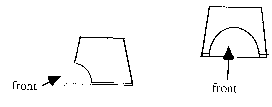 |
 |
|
|
|
|
4th Grade Performance Task Description:Students will measure the distances different balls move a cup, reinforcing the idea that energy can be transferred from one object to another. This task assesses students' abilities to accurately record measurements, observe, compare and interpret data, construct explanations based on data, and make predictions. This task is designed to take students approximately 15-20 minutes to complete. Overall Task Content Area:
Specific Knowledge Areas:
Performance Expectations:
National Science Education Standards:8 B PS 2: Motions and forces: Grades K-4 4 A SI 1: Abilities necessary to do scientific inquiry:
Grades K-4 1.4 Use data to construct a reasonable explanation. This aspect of the standard emphasizes the studentsí thinking as they use data to formulate explanations. Even at the earliest grade levels, students should learn what constitutes evidence and judge the merits or strength of the data and information that will be used to make explanations. After students propose an explanation, they will appeal to the knowledge and evidence they obtained to support their explanations. Students should check their explanations against scientific knowledge, experiences, and observations of others. (Use the "hot" link on the PALS home page to check the full text of related National Science Education Standards, if desired.) National Council of Teachers of Mathematics: DAP1: Formulate questions that can
be addressed with data and collect, organize, and display relevant
data to answer them: DAP3: Develop and evaluate inferences
and predictions that are based on data: MEAS1: Understand measurable attributes of objects and
the units, systems, and processes of measurement: MEAS2: Apply appropriate techniques, tools, and formulas
to determine measurements : PS2: Solve problems that arise in mathematics and in
other contexts: RP2: Make and investigate mathematical conjectures:
COM2: Communicate their mathematical thinking coherently
and clearly to peers, teachers, and others: General Instructions to the Teacher:This task is designed to take approximately 30-40 minutes to complete. Students will be working individually during this exercise. Students should be ready to work as soon as the period begins. The materials should be set out at each lab station, if possible. A central supply area, if needed, should be easily accessible. All supplies should be clearly labeled. Materials for "Balls and Ramp":The teacher will need:
At each station students should have:
Advance Preparation:Plastic container:
Diagram of student set up:
Safety:
Extensions/Modifications:
|

